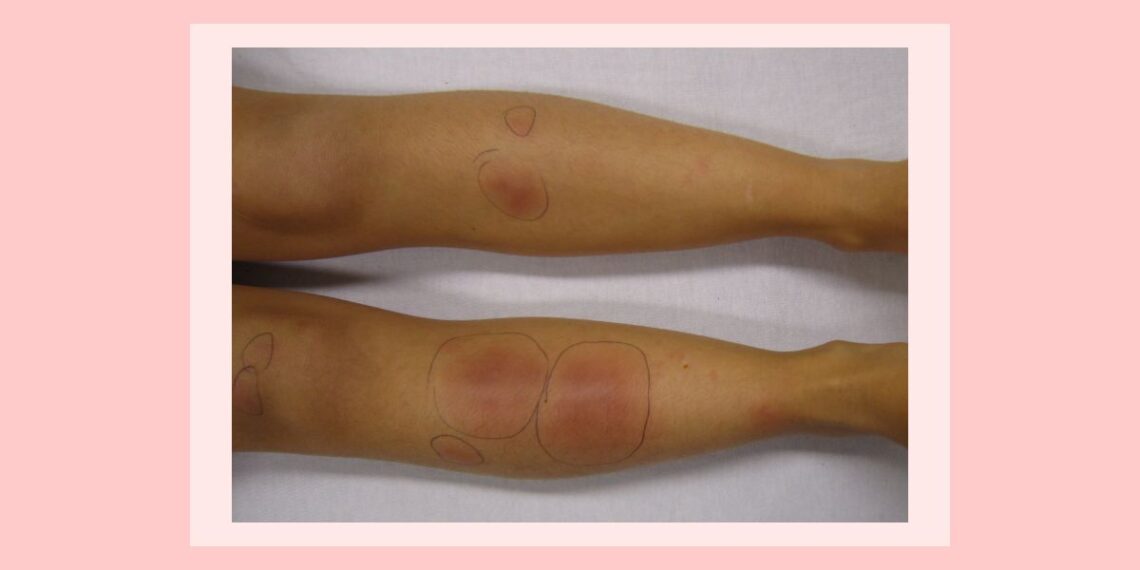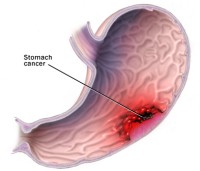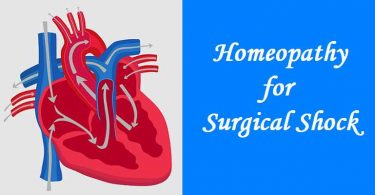Erythema nodosum occurs as crops of tender, red nodules on the lower limbs over a period of a few weeks, associated with an identifiable trigger.
Etiology of erythema nodosum
Erythema nodosum is relatively common and especially affects young, adult females. The particular cause depends on local conditions. Within the UK, Sarcoidosis, streptococcal infections and drug eruption are most to blame.
The condition appears to be an immunological reaction that can be precipitated by a wide range of antigens. In Sarcoidosis, Erythema nodosum is a well known association with bilateral hilar adenopathy (Lofgren’s syndrome).
Tuberculosis is a very common cause in Third World countries. In these cases the nodules are often on the backs of the calves and may ulcerate. It is known as erythema induratum (Bazin’s disease). Mycobacterium tuberculosis genes have been identified in the skin lesions by PCR. Sometimes, an identical clinical picture is seen in patients who have no overt signs of tuberculosis but have an unusually pronounced response to the Mantoux test at 1:10000 and a past personal or family history of exposure to tuberculosis. Antituberculous therapy is often effective.
Pathophysiology of erythema nodosum
Erythema Nodosum is a hypersensitivity reaction causing a localized inflammatory infiltrate that involves the septae of subcutaneous fat. There are few, if any, systemic manifestations.
On histological examination, Miescher’s radial granulomas are noted; these consist of small, well defined nodular aggregations of small histiocytes around a central stellate or banana shaped cleft.
Erythema Nodosum may be associated with a variety of medical disorders, although up to 50% of cases are idiopathic. In children, the most common causes are infectious, with streptococcal illnesses being most common. In adults, drugs, Sarcoidosis, and inflammatory bowel disease are the leading causative factors.
Coccidioidomycosis, or San Joaquin Valley fever, is an important cause of erythema nodosum in the western and southwestern United States. Other, less common causes of EN include fungal infection, malignancies, pregnancy, lymphogranuloma venereum, syphilis, and cancroids.
Clinical Presentation of erythema nodosum
Erythema nodosum often presents with crops with crops of tender and red nodules, usually on the lower legs. They are ill defined and can become indurated. The lesions vary in size and range from 2 to 4 cm in diameter. Malaise, arthralgia and fever also tend to accompany them. There may also be a history of systemic disorder.
Diagnosis of erythema nodosum
The diagnosis is made clinically in most cases. However, for individuals in whom the diagnosis is uncertain, excision biopsy may be helpful. A careful history usually reveals prodromal symptoms of fever, malaise, and arthralgia preceding the eruption by 1 to 3 weeks.
One or more lesions develop simultaneously and may last several weeks. They are usually found on the extensor aspects of the extremities, and they occur bilaterally in most cases. The lesions usually do not suppurate or form ulcers, but they often involute, leaving yellow purple bruises.
Management of erythema nodosum
The eruption is usually self limited if the underlying causes can be eliminated. Therefore, clinical and laboratory evaluations should be directed at determining the causative etiology. If the causes cannot be identified or treated, symptomatic therapy with aspirin, non-steroidal anti-inflammatory drug (NSAIDs), oral potassium iodide, or short course of systemic steroids may provide symptomatic relief.
Homeopathic treatment of erythema nodosum – Homeopathy is one of the most popular holistic systems of medicine. The selection of remedy is based upon the theory of individualization and symptoms similarity by using holistic approach. This is the only way through which a state of complete health can be regained by removing all the sign and symptoms from which the patient is suffering. The aim of homeopathy is not only to treat erythema nodosum but to address its underlying cause and individual susceptibility. As far as therapeutic medication is concerned, several remedies are available to cure erythema nodosum that can be selected on the basis of cause, sensations and modalities of the complaints. For individualized remedy selection and treatment, the patient should consult a qualified homeopathic doctor in person. There are following remedies which are helpful in the treatment of erythema nodosum:
Allium Cepa, Arnica Montana, Bryonia, Conium Mac, Lachesis, Nux vomica, Rhus Tox, Sulphur, Calcaria Carb, China, Dulcamara, Ledum Pal, Plumbum Met, Silicea, Antim Crude, Apis Mel, Belladonna, Mezarium, and many other medicines.
References:
Anthony Du Vivier, Phillip H. McKee; Atlas of clinical dermatology; 2002; 391
Seau Tak Cheung; Ophthalmology, dermatology, ENT; 2009; 179
Michael l. Greenberg; Greenberg’s text- atlas of emergency medicine; 435




